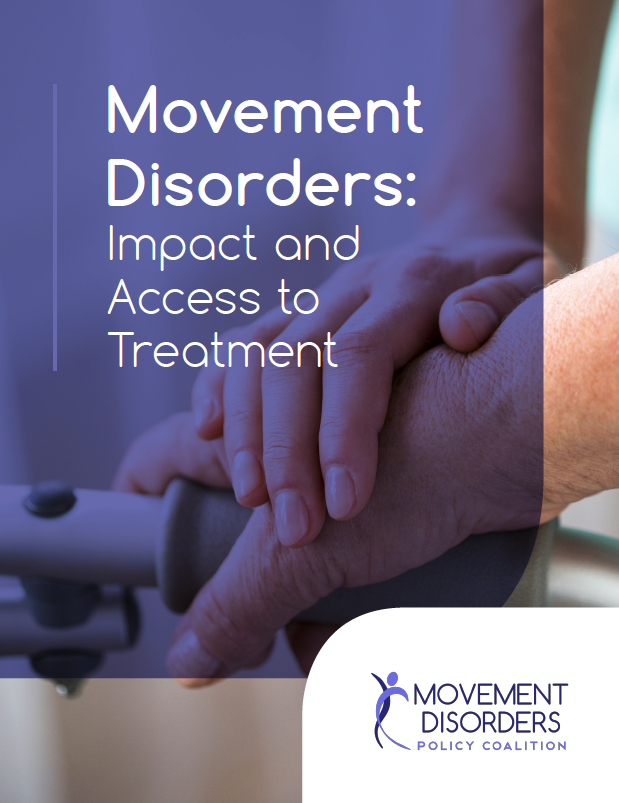Movement Disorders Group Explores Impact, Treatment Barriers in New White Paper
October 17, 2017
Millions of people are affected by neurological conditions known as movement disorders: Parkinson’s disease, essential tremor, tardive dyskinesia and more. A better understanding of these complex conditions has led to new, innovative treatments, explains a new white paper from the Movement Disorders Policy Coalition. But both the burden of these diseases and the ability of patients to receive advanced treatments remains complex.
As “Movement Disorders: Impact and Access to Treatment” explains, these diseases have a multi-level impact, most notably the burden of the condition on patients themselves. Living with disease symptoms, treatment side effects and loss of independence all affect one’s quality of life. “Older patients in particular may find their independence fading as they increasingly rely upon caregivers for day-to-day support,” the paper explains.
Cost—including missed work, treatment and health care expenses—is another layer of impact. And there’s also the impact on caregivers. An estimated 65 million Americans provide care for a family member or friend; the emotional, physical and financial toll can be significant.
Treatment options vary widely by condition, but one experience is common: health plan coverage design may limit access to treatment for those with movement disorders. The paper outlines four specific barriers:
- Prior authorization, where insurance companies must approve a prescription before a patient can begin treatment. It can interfere with timely administration of medications.
- Step-therapy, which requires a patient to try a less expensive alternative—and sometimes even an off-label drug—before getting the medication initially prescribed by their physician.
- Cost sharing, where patients’ co-pays or co-insurance make some medication simply unaffordable.
- Prescribing restrictions, where health plans dictate that only specialists can prescribe certain medications. This may add the time and expense of another doctor’s visit before a patient can get treatment.
Each of these barriers challenges the value of the doctor-patient relationship and exposes patients to unnecessary risk.
Yet the paper ends on an optimistic note, stating, “Movement disorder patients have more hope and more treatment options today than ever before.” As breakthrough therapies continue to become available, patients will have the opportunity to address their condition, alleviate its comorbidities and improve their quality of life – some for the first time. It is important to ensure these treatments are accessible.
To learn more, read “Movement Disorders: Impact and Access to Treatment.”
Tags: NeurologicalCategorized in: Blog

